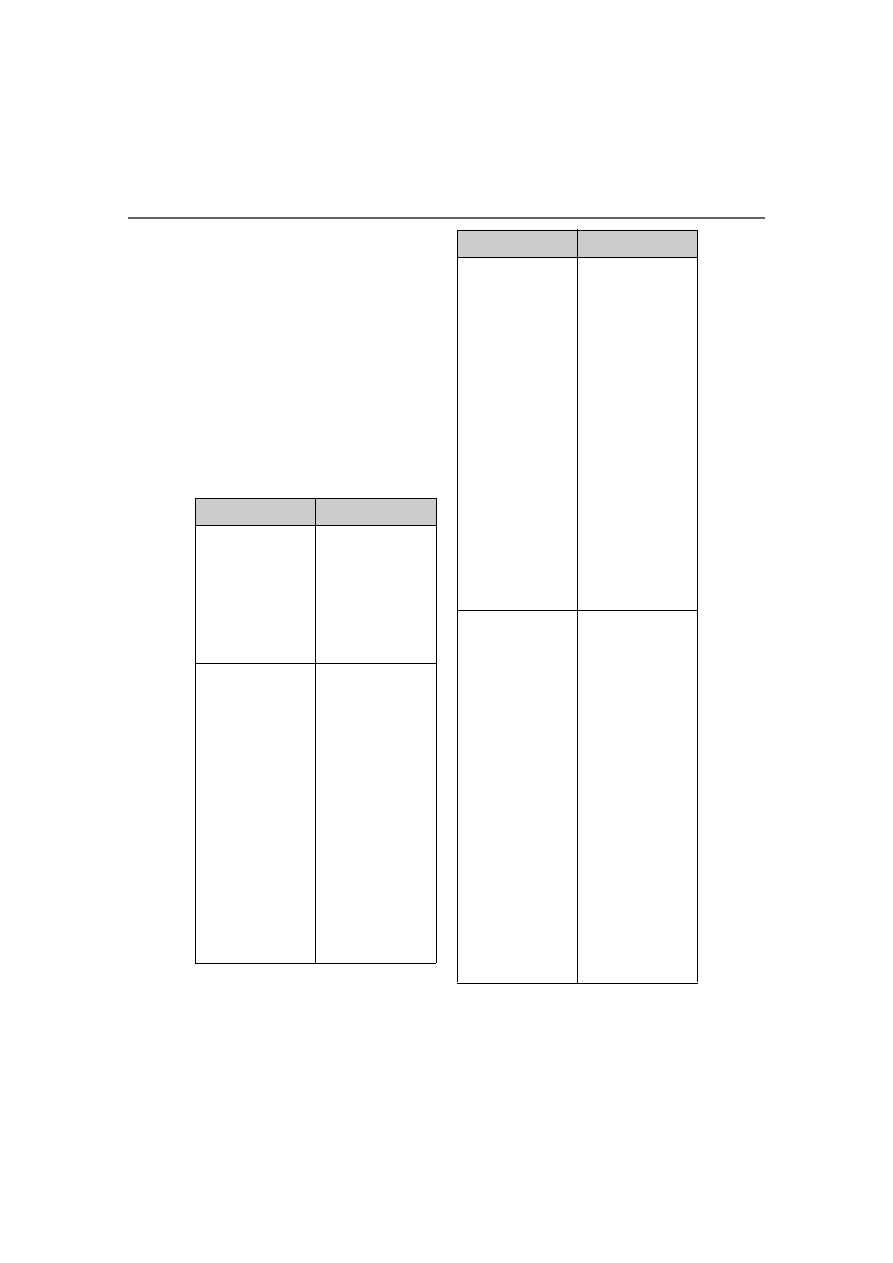LEXUS LC 500H (2019 year). Instruction - part 13

202
4-5. Using the driving support systems
during driving (poor roads or road
seams).
●
The headlight lenses are dirty and emit a
faint amount of light at night, or the beam
axis has deviated.
●
The vehicle is struck by a crosswind.
●
The vehicle has just changed lanes or
crossed an intersection.
●
Snow tires, etc. are equipped.
■
Warning message
If the following warning message is dis-
played on the multi-information display and
the LKA indicator illuminates in orange, fol-
low the appropriate troubleshooting proce-
dure.
Warning message
Details/Actions
“Lane Keeping
Assist Malfunction
Visit Your Dealer”
The system may not
be operating prop-
erly.
Have the vehicle
inspected at
your Lexus
dealer.
“Front Camera
Unavailable
Remove Debris On
Windshield”
Dirt, rain, conden-
sation, ice, snow,
etc., are present on
the windshield in
front of the camera
sensor.
Turn the LKA
system off,
remove any dirt,
rain, condensa-
tion, ice, snow,
etc., from the
windshield, and
then turn the
LKA system
back on.
“Front Camera
Unavailable”
The operation con-
ditions of the cam-
era sensor
(temperature, etc.)
are not met.
When the opera-
tion conditions
of the camera
sensor (tem-
perature, etc.)
are met, the LKA
system will
become avail-
able. Turn the
LKA system off,
wait for a little
while, and then
turn the LKA
system back on.
“Lane Keeping
Assist Unavailable”
The LKA system is
temporarily can-
celed due to a mal-
function in a sensor
other than the cam-
era sensor.
Turn the LKA
system off and
follow the appro-
priate trouble-
shooting
procedures for
the warning
message. After-
ward, drive the
vehicle for a
short time, and
then turn the
LKA system
back on.
Warning message
Details/Actions